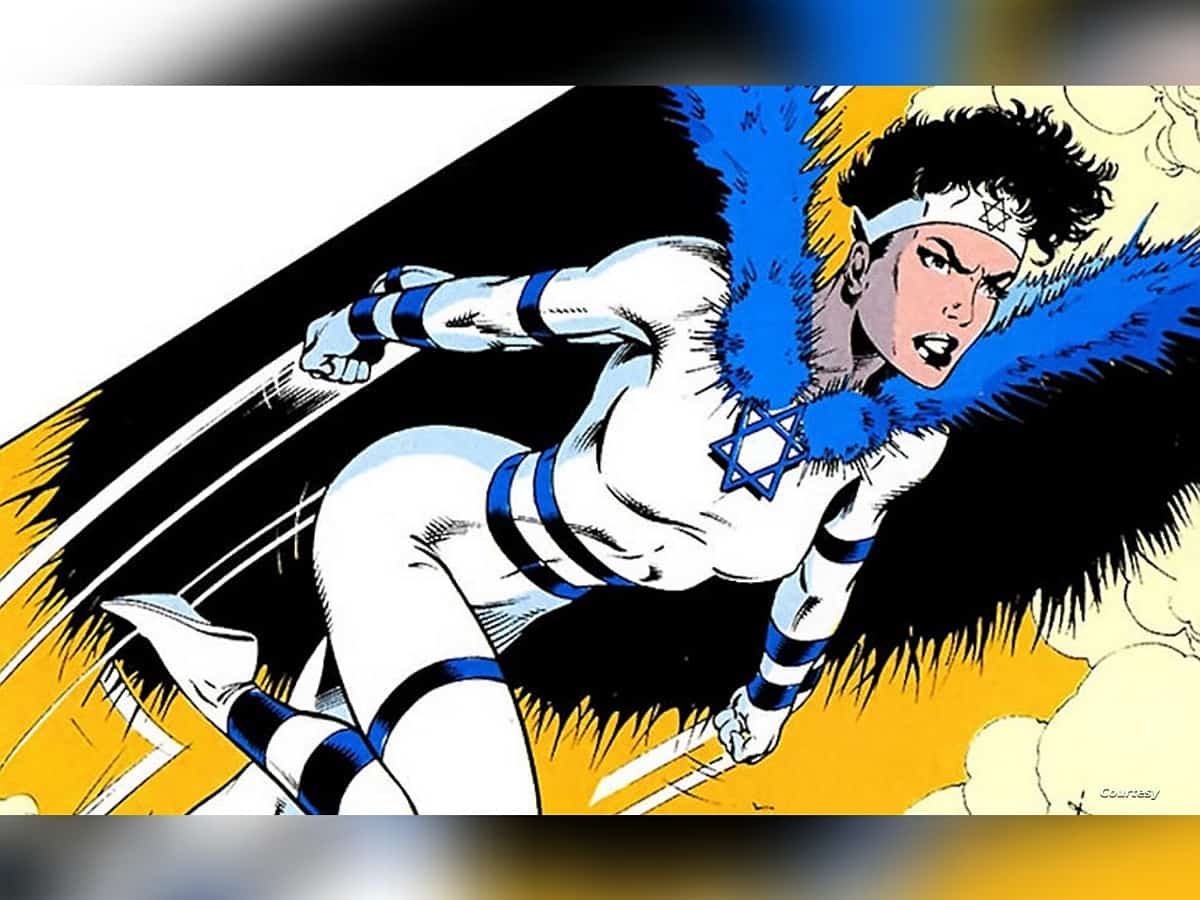
Marvel Cinematic Universe (MCU) revealed a new character who will play an Israeli superhero in the upcoming Captain America movie series, which will be portrayed by Israeli actress Shira Haas.
This move sparked angry reactions on social media platforms, especially regarding the name for Shira Haas’s role, which is Sabra.
Marvel Studios announced the new character in its upcoming movie New World Order – which is scheduled to be released on May 3, 2024, at the D23 Expo festival held by Disney Studios in Anaheim, South of Los Angeles on Saturday, September 10.
27-year-old actress Shira Haas, plays Sabra, a Jewish heroine and former Mossad agent, also known as Ruth Bat Seraph.
Captain America: New World Order, which is based on an Israeli superhero in the Marvel world, sparked many criticisms from Marvel fans in the Arab world.
The character Sabra is derived from the Marvel Universe comics in the 1980s and appeared in the comics as an Israeli superhero who dedicates her strength to serving the Mossad, and according to the comics, Sabra entered into a conflict with the character of Hulk because of the belief that they are an Arab terrorist.
In the comics, Sabra wears white clothes and a blue scarf attached to her neck with the Star of David, as a representation of the Israeli flag.
The news sparked widespread controversy on social media platforms. The Israelis welcomed the new role, even as many Palestinians and pro-Palestinian activists expressed their objection to the embodiment of the heroic role of the Israeli character.
The pioneers of social networking sites expressed their indignation in particular for using the name Sabra, as it reminds them of the Sabra and Shatila massacre, which claimed thousands of lives in the Palestinian refugee camp in Lebanon, at the hands of the militias, said to be pro-Israel.
It is noteworthy that the announcement of the name of the Israeli actress, Sabra, came on September 10, and it comes days before the anniversary of the Sabra and Shatila massacre, which falls on September 16 of each year.
Sabra and Shatila massacre
September 16 marks the 40th anniversary of the heinous Sabra and Shatila that took place in 1982, where mostly Palestinians and Lebanese Shiites were killed, at a time when the country was witnessing a civil war (1975-1990). Christian Phalange fighters had entered the Palestinian refugee camps— Sabra and Shatila, in the west of the Lebanese capital, Beirut.
The Sabra and Shatila massacre began on September 16, 1982, and claimed the lives of about 3,500 civilians.
According to the international human rights watch organization, Human Rights Watch, in a 2014 report, pregnant women were slaughtered, women were raped, children and old people were murdered in cold blood, and corpses were mutilated and thrown into alleys and destroyed homes. Images from the aftermath were aired on television worldwide and caused global outrage.
The killing continued for 43 hours, from 6 pm on Thursday, September 16, until 1 pm on Saturday, September 18.
The memory of the three-day massacre remains a source of great pain for the Palestinian and Lebanese civilians who survived it.
Researchers and oral narrators classified the nationalities of the victims of the Sabra and Shatila massacre— 75 per cent Palestinians, 20 per cent Lebanese, 5 per cent (Syrians, Iranians, Bengalis, Turks, Kurds, Egyptians, Algerians, and Pakistanis), and others whose nationalities were not specified, according to the Palestinian News Agency (WAFA).
Beginnings of the massacre
Two days before the massacre, the newly elected President of the Lebanese Republic, Bashir Gemayel, was assassinated on September 14, 1982.
On Wednesday, September 15, 1982, Israeli occupation forces besieged the Sabra neighbourhood and Shatila refugee camp and began to monitor every movement in the area from the top of the building they occupied.
At dawn on Thursday, September 16, the forces stationed in a building at the entrance to Shatila watched every moment and movement in the camp and gave orders to the militia killers in Lebanon, while its planes and army began dropping light bombs, to illuminate the darkness of the safe place before the eyes of the killers of children, women and the elderly.
On the morning of Friday, September 17, the signs of the massacre began to become clear to most of the residents of the area, after they saw the bodies and bulldozers demolishing houses over the heads of their owners, burying them both dead and alive.
As per media reports, they sneaked out of the area from a fixed forest, while families and homes did not know what was going on, and the fate of some of them was murder because the killings were done silently and quickly.
On Friday, tales of death pits began, and the number of attackers increased, although the testimonies and facts confirm that the largest number of martyrs rose on the first night of the massacre, Thursday night, the methods of killing developed and phosphorous bombs were added to them that were thrown in the shelters.
They also stormed Acre Hospital, killed Palestinian nurses, doctors, and kidnapped patients, injured people, and those fleeing the massacre from inside the hospital.
The second day was marked by more killing inside houses, and in some alleys.
On the third day, Saturday, September 18, the killing, slaughter and kidnapping operations continued.
Remembering the Sabra and Shatila massacre 40 years on
Palestinian Moamen al-Halabi wrote on Twitter, “I did not witness the massacre, but I inherited from the tales the horror, and I inherited hatred and hatred for everyone who participated in the killing of the sons of Sabra and Shatila…so that we do not forget Sabra and Shatila.”
The survivors of the massacre commemorate annually the memory of this heinous massacre and remember the scenes of killing, violations and the bodies that they were unable to remove from their memory, especially in the absence of justice and trial.
